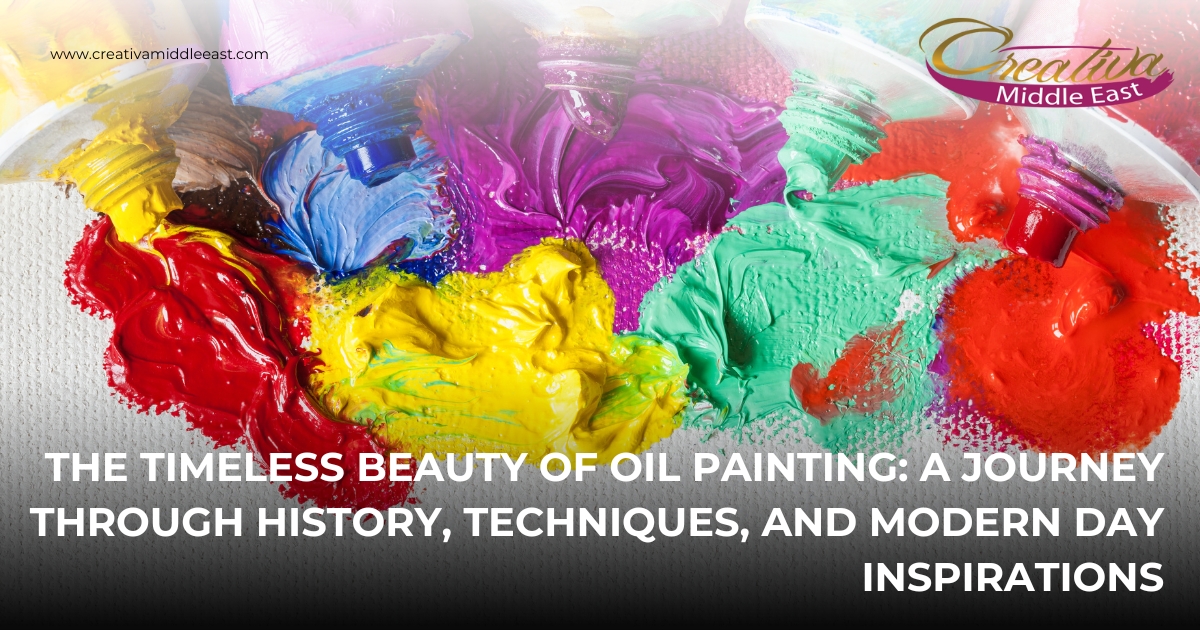
Oil painting, a medium steeped in rich history and artistic innovation, continues to captivate audiences with its unparalleled depth, texture, and vibrancy. From the grandiose works of the Renaissance masters to contemporary pieces pushing the boundaries of the medium, oil painting remains a cornerstone of artistic expression.
A Brief History of Oil Painting
The origins of oil painting can be traced back to the early 15th century, with the technique gaining widespread prominence through the works of Flemish painter Jan van Eyck. Although van Eyck is often credited with its invention, oil-based pigments were used long before his time, but he significantly refined and popularized the method.
During the Renaissance, oil painting revolutionized the art world, offering artists a new medium to explore realism and detail. The likes of Leonardo da Vinci, Michelangelo, and Raphael harnessed the power of oil paints to create masterpieces that transcended the boundaries of previous artistic endeavors. This period laid the foundation for centuries of innovation and creativity.
Techniques and Materials
Oil painting is renowned for its versatility and the depth of color it can produce. The medium involves pigments suspended in a drying oil, such as linseed oil, which can be applied in thin glazes or thick impastos.
- Underpainting: Often, artists begin with an underpainting—a monochromatic sketch that serves as the foundation for the final piece. This helps establish the composition and tonal values.
- Layering and Glazing: Oil paints are applied in layers, allowing for corrections and the gradual buildup of color and detail. Glazing, a technique where transparent layers of paint are applied over a dry underpainting, can create luminous and complex color effects.
- Impasto: For a more textured look, artists use impasto, applying thick layers of paint with a brush or palette knife. This technique adds dimensionality and movement to the artwork.
- Blending: One of the unique advantages of oil paint is its slow drying time, which allows for meticulous blending and the creation of smooth transitions between colors and tones.
Notable Oil Paintings and Artists
Throughout history, numerous artists have left an indelible mark on the world of oil painting. Some of the most iconic works include:
- Leonardo da Vinci’s “Mona Lisa”: Celebrated for its exquisite detail and the enigmatic expression of the subject, this painting exemplifies the mastery of oil technique.
- Vincent van Gogh’s “Starry Night”: Van Gogh’s use of bold colors and dynamic brushstrokes in this painting demonstrates the emotive power of oil paints.
- Rembrandt’s “The Night Watch”: Known for its dramatic use of light and shadow, Rembrandt’s work showcases the depth and realism achievable with oils.

Oil Painting in the Modern Era
In contemporary art, oil painting continues to evolve, with artists experimenting with new techniques and themes. The flexibility of oil paints allows modern artists to merge traditional methods with avant-garde approaches, resulting in a diverse array of styles and expressions.
Artists like Jenny Saville, known for her large-scale, raw depictions of the human form, and Gerhard Richter, who combines photo-realism with abstract elements, push the boundaries of what oil painting can achieve.
Tips for Aspiring Oil Painters
For those interested in exploring oil painting, here are some tips to get started:
- Invest in Quality Materials: High-quality paints, brushes, and canvases make a significant difference in the outcome of your work.
- Practice Patience: Oil painting requires patience, from allowing layers to dry to mastering blending techniques. Take your time to develop your skills.
- Study the Masters: Analyze the works of renowned oil painters to understand their techniques and approaches.
- Experiment: Don’t be afraid to try new methods and styles. Oil painting is a versatile medium that rewards creativity and innovation.
Oil painting, with its rich history and enduring appeal, remains a vital and dynamic form of artistic expression. Embrace the journey, and let your imagination flow with the timeless beauty of oil paints.
If you are looking some material of DIY projects like canvas,oil paints,brushes etc in Uae .The best option is https://creativamiddleeast.com/. Let Creativa Middle East be your guiding light on this transformative journey. If you are looking for a best supplies in craft materials. Creativa Middle east is the best art and craft store in UAE. For more detail https://creativamiddleeast.com/
